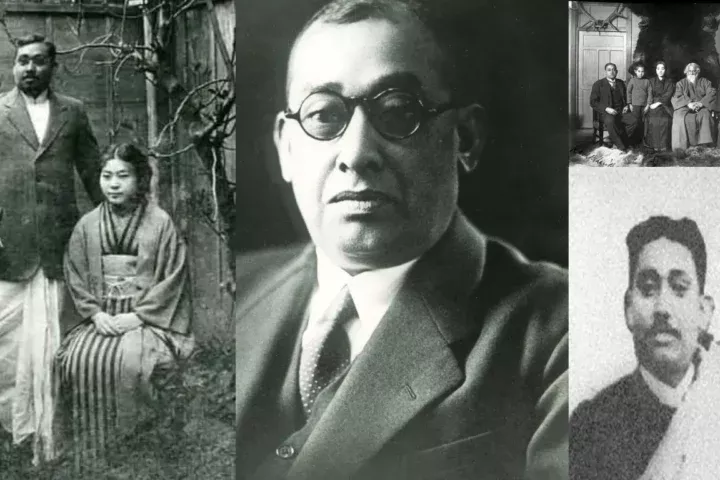Mark your calendars for January 22, 2024, as the Ayodhya Ram Mandir, situated at the historic Ram Janmabhoomi site in Ayodhya, Uttar Pradesh, is all set for its grand inauguration. This splendid temple, devoted to Lord Rama, holds deep cultural significance. Uncover the fascinating cultural heritage surrounding the Ram Mandir.

Ayodhya Ram Mandir, constructed in Ayodhya, India, holds religious significance at the site of Ram Janmabhoomi, which is the birthplace of the Hindu deity Rama. Following a 2019 Supreme Court verdict, the disputed land was allotted for the temple’s construction, with an inauguration scheduled for 22 January 2024. Prime Minister Narendra Modi Began 11-Day Special Ritual on 12th January 2024 for Ayodhya’s Ram Temple Event.
The “Pran Pratishtha” or consecration ceremony of the Ayodhya Ram Mandir will take place on January 22, 2024. Read this article to know the cultural and religious significance of Ayodhya Ram Mandir, its history, Architectural and Constructional Aspects.
Ram Mandir Pran Pratishtha Ceremony 2024
The Pran Pratishtha ceremony for the Ram Mandir in Ayodhya, Uttar Pradesh is scheduled to take place on January 22, 2024, between 12:15 and 12:45 PM. The ceremony will include the temple’s consecration and the invocation of a deity as an idol.
The Pran Pratishtha ceremony is a Hindu ritual that involves imbuing an idol with a sacred or divine essence. The term “pran” signifies life, while “pratishtha” translates to establishment.
Prime Minister Narendra Modi will perform rituals to mark the “Pran Pratishtha”. The main rituals will be led by a team of priests led by Lakshmikant Dixit. The event will be broadcast live across India and livestreamed on the YouTube channel Doordarshan National for international audiences.
Ram Mandir Inauguration 2024
Scheduled for January 22, 2024, the inauguration of the Ram Mandir in Ayodhya will be a historic event led by Prime Minister Narendra Modi during the Pran Pratishtha (consecration) ceremony. The nation eagerly anticipates this momentous occasion, marking a significant milestone in India’s cultural and religious heritage.
Schedule of Week-Long Celebration of Ram Mandir Inauguration
The week-long celebration for the Ayodhya Ram Mandir ceremony, starting from January 16, 2024, concludes on January 22, 2024, with the much-anticipated Pran Pratishtha ceremony, where Prime Minister Narendra Modi will serve as the chief guest
Date Event
January 16, 2024 Atonement ceremony and Dashvidh bath
January 17, 2024 Procession of Ram Lalla and Pran Pratishtha ceremony
January 18, 2024 Formal rituals: Ganesh Ambika puja, Varun puja, Matrika puja, Brahmin Varan, Vastu puja
January 19, 2024 Lighting of the Holy Fire, installation of “Navagraha,”
and a “havan”January 22, 2024 Pran Pratishtha ceremony, consecration ceremony,
and the main event with Prime Minister Narendra Modi as the chief guest
Ram Mandir Murti
The Statue of Rama is a planned monument in Ayodhya, Uttar Pradesh, India. It will be 181 meters (594 ft) tall, and 251 meters (823 ft) tall including the plinth and umbrella.
The idol of Ramlala, which depicts Lord Ram as a five-year-old child, was revealed days before the consecration ceremony on Monday. The idol was made by the famous sculptor Arun Yogiraj from Karnataka. The new idol will be called Achal Murti, while the old idol will be called Utsavmurti.
Important Facts About Ayodhya Ram Mandir
Ayodhya Ram Mandir Overview
Temple Name Shri Ram Mandir (popularly known as Ram Mandir), Location Ayodhya, Uttar Pradesh, India, Dedication Lord Shri Rama. Significance Built at Ram Janmabhoomi, birthplace of Lord Shri Rama, Construction Style Indian Nagar Style, Architect Chandrakant B. Sompura (CBS), Construction Company Larsen and Toubro (L&T),Project Management Company Tata Consulting Engineers Limited (TCEL),Sculptors Arun Yogiraaj (Mysore), Ganesh Bhatt, Satyanarayan Pandey, Total Area 70 Acres (70% green area),Temple Area 2.77 Acres, Temple Dimensions Length – 380 Ft., Width – 250 Ft., Height – 161 Ft.
Ayodhya Ram Mandir History From 1528-2024

Period Event
16th Century The temple was attacked and destroyed by Babur.1767 The earliest record of the mosque in Descriptio Indiae.1853 The first instance of religious violence was documented.1858 British administration prohibits Hindu rituals.1949 Murtis of Rama and Sita were installed inside Babri Masjid.1950 The state took control of the mosque; Hindus allowed worship.1980s Vishwa Hindu Parishad (VHP) launches movement for a temple.1989 VHP leaders conduct Shilanyas, laying the foundation adjacent to the disputed site.1992 Demolition of the mosque by VHP and BJP rally; inter-communal violence ensues.2005 Terrorist attack on makeshift Ram temple; attackers killed.2019 Supreme Court’s verdict on Ayodhya dispute; land handed to Shri Ram Janmabhoomi Teerth Kshetra trust.2020 Government approves plan for temple construction; land allocated for a new mosque in Dhannipur village.



About Ayodhya Ram Mandir
Chief Architect and Construction Entities

Chief Architect: Chandrakant B. Sompura (CBS),Construction Company: Larsen and Toubro (L&T),Project Management Company: Tata Consulting Engineers Limited (TCEL),Design Advisors: IIT Chennai, IIT Bombay, IIT Guwahati, CBRI Roorkee, SVNIT Surat, NGRI Hyderabad, Sculptors: Arun Yogiraaj (Mysore),Ganesh Bhatt, and Satyanarayan Pandey,Temple Dimensions and Style,Total Area: 70 Acres (70% green area),Temple Area: 2.77 Acres, Length: 380 Ft., Width: 250 Ft., Height: 161 Ft., Construction Style: Indian Nagar Style…Construction Materials Used,High-Grade “Rolled Compacted Concrete” without Steel
Pink Sandstone, Granite Stone, Shaligram Rock., Copper Plates, Gold and Ashtdhatu , Teakwood.
Architectural and Constructional Aspects of Ayodhya Ram Mandir Foundation Design of Ayodhya Ram Mandir,14-meter thick Rolled Compacted Concrete shaped like Artificial Stone.56 layers of compact concrete made of Fly Ash/Dust and chemicals. A 21-foot-thick plinth of Granite to protect the temple from moisture. Foundation materials include Granite Stone from Karnataka & Telangana and Pink Sandstone from Bans Paharpur (Bharatpur, Rajasthan).
Building Description.
3-storied earthquake-resistant structure.392 pillars and 44 doors. Teakwood and gold-plated doors.The estimated age of the temple structure is 2500 years.Idols made of 60 million-year-old Shaligram Rocks from the Gandaki River (Nepal).Bell made of Astadhatu weighing 2100 Kg, audible up to 15 Km.
Other Features
The main sanctum houses the idol of Shri Ram Lalla. Shri Ram Darbar on the first floor.5 Mandapas: Nritya Mandapa, Rang Mandapa, Sabha Mandapa, Prarthana Mandapa, Kirtan MediaFour temples at the periphery are dedicated to Suryadev, Mother Bhagwati, Lord Ganesha, and Lord Shiva. Temples for Goddess Annapurna in the north and Lord Hanuman in the south. Additional temples dedicated to various stages, King Nishad, Mata Shabari, and Devi Ahilya. Inclusion of Sita Kupp within the temple premises. Renovation of the ancient temple of Lord Shiva on Navratan Kubera Hill, with an installation of a Jatayu statue.
Ram Janmabhoomi Movement
The Ram Janmabhoomi Movement emerged in the 1980s, led by the Vishwa Hindu Parishad, aiming to reclaim the site in Ayodhya where Lord Rama is believed to be born. The disputed site housed the Babri Masjid, constructed by the Mughals.
Demolition (1992): A rally turned hostile in 1992, leading to the demolition of the Babri Masjid by volunteers (Kar Sevaks).

Court’s Verdict (2019): The Supreme Court ruled that a Hindu temple existed on the site before the mosque. The disputed land was given to a trust, Shri Ram Janmabhoomi Teerth Kshetra, formed by the Indian government for the construction of the Ram Mandir.
Ayodhya Dispute Legal Journey: The dispute, beginning in 2002, revolved around the control of the site. The Allahabad High Court’s 2010 ruling divided the land among the Sunni Board, Nirmohi Akhada, and the Hindu party, with the main disputed section awarded to the Hindus. The 2019 Supreme Court verdict suspended this ruling, allocating the land for a Hindu temple and providing an alternative site for a mosque, based on archaeological findings. The court directed the government to oversee temple construction through a trust.
- India has more than 300,000 active mosques a number which is more than most Islamic nations.
- There are more than 30,000 mosques in Bangladesh
Shri Ram Janmabhoomi Teerth Kshetra
The Shri Ram Janmabhoomi Teerth Kshetra is a trust established by the Government of India to manage and construct the Ram Mandir in Ayodhya. The trust was established on February 5, 2020, and is made up of 15 trustees. Mahant Nritya Gopal Das is the trust’s chairman.
The trust is registered under the Foreign Contribution Regulation Act (FCRA) of 2010, and foreigners can also donate to the trust. The trust’s official booking portal allows donors to view and download donation receipts. Donors can also use the “Donation Receipt” service to request and download receipts for donations made through direct deposit.
Rise of Spiritual Tourism in Ayodhya
Ayodhya has seen a rise in spiritual tourism since the announcement of the temple at the Ram Janmabhoomi site. In 2022, the Uttar Pradesh Tourism Department recorded 2.36 crore domestic and 1,465 foreign tourists in the Ayodhya district, marking an 8,342.7% yearly tourism increase.
The construction of the Ram Temple has helped the economic condition in Ayodhya. The increasing number of tourists has created new job opportunities for locals, and new businesses have opened near the temple. Ayodhya is a pilgrim town and is a good place to buy religious souvenirs like idols of Lord Ram, Sita, and Lakshman, and t-shirts with religious text
Ayodhya Ram Mandir
The Ayodhya Ram Mandir, dedicated to Lord Rama and located at the Ram Janmabhoomi site in Ayodhya, India, is set for inauguration on January 22, 2024, following a 2019 Supreme Court verdict. Spanning 70 acres, with 2.77 acres for the temple, the Indian Nagar-style structure, designed by architect Chandrakant B. Sompura, stands at 380 ft. length, 250 ft. width, and 161 ft. height. Constructed by Larsen and Toubro, managed by Tata Consulting Engineers, and featuring 392 pillars, the temple utilizes high-grade materials like rolled compacted concrete, pink sandstone, and teakwood. Ayodhya has experienced a surge in spiritual tourism, fostering economic growth and job opportunities.
Sharing is caring.








